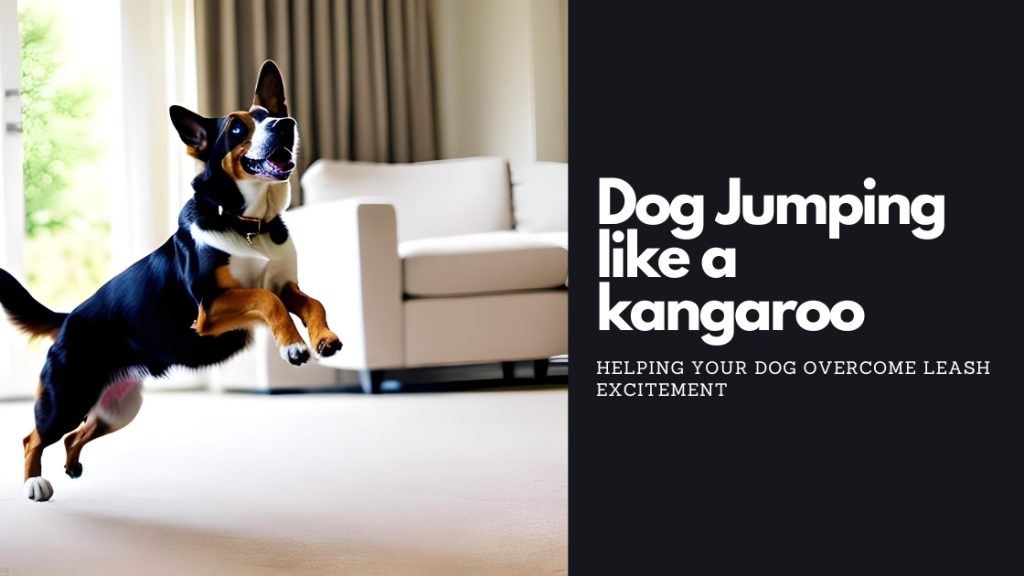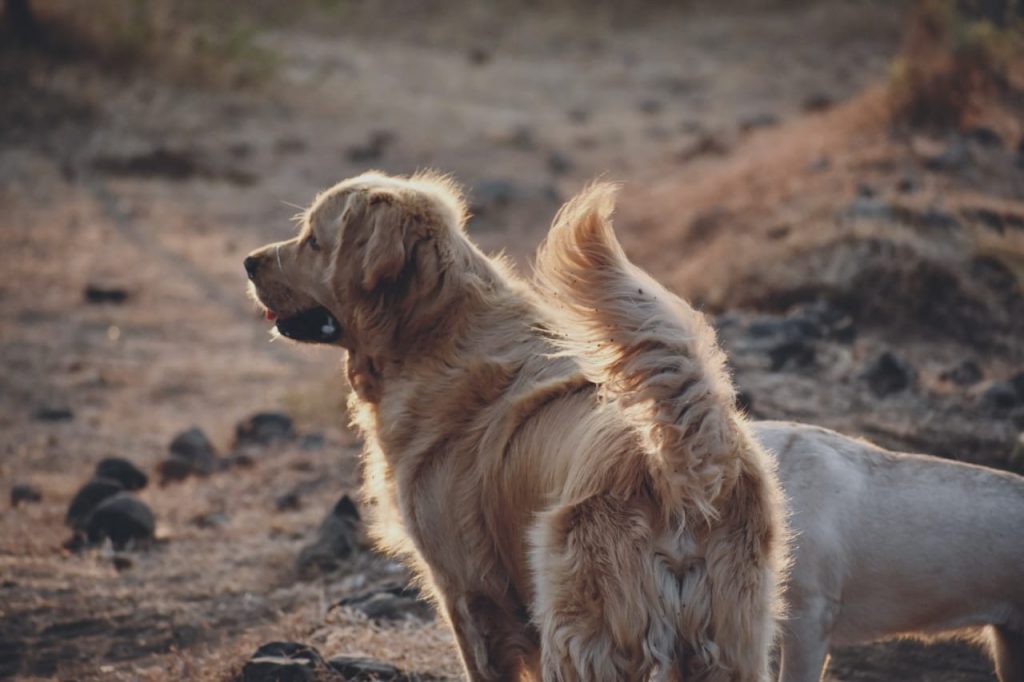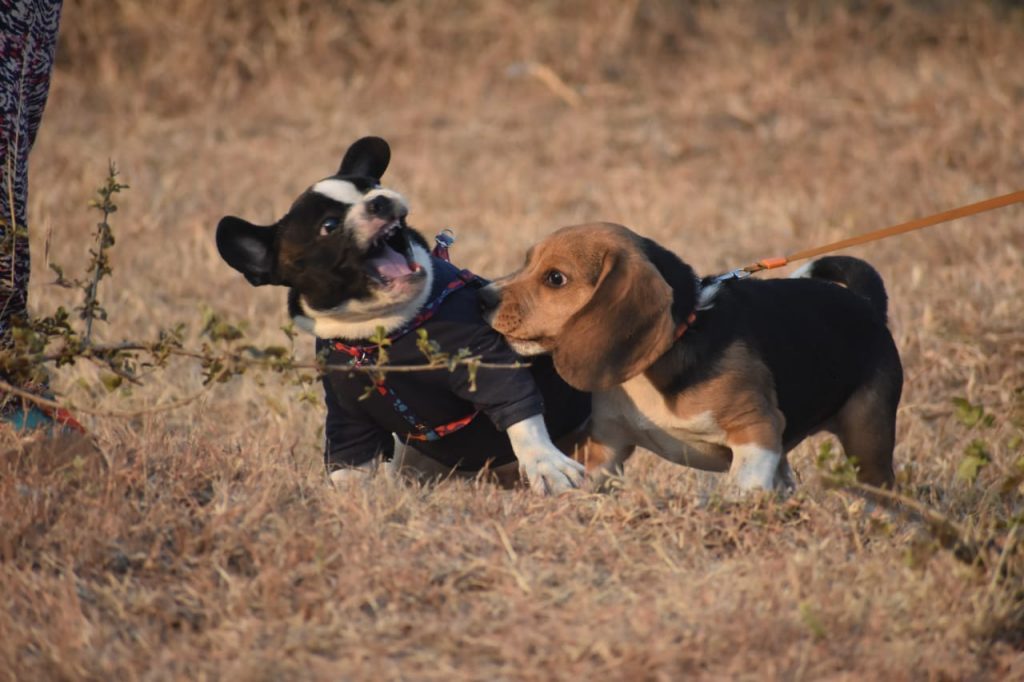Is your dog turning into a jumping kangaroo at the sight of a leash? Does the mere thought of taking them for a walk make you anxious? We understand the frustration and embarrassment that comes with trying to control an overly excited pup on a leash.
In this blog post, we have a solution for you. We’ll walk you through a simple training approach to help calm your dog’s leash excitement and transform those chaotic walks into enjoyable outings for both of you.
We’ll delve into the reasons behind your dog’s energetic behavior, explain why a harness might not be the best solution, and introduce a fabric martingale collar as a helpful alternative. Using a step-by-step approach, we’ll guide you in reshaping your dog’s association with the leash, leading to a more relaxed and controlled walking experience.
So, if you’re tired of feeling like a marathon runner or the star of a circus act while attempting to walk your dog, keep reading. Get ready to regain control and make walks a pleasurable experience for both you and your furry companion!
🐾 Why is your dog jumping like a kangaroo?
When dogs are young, they naturally get excited about many things, including walks. However, as they grow older, this excitement can become amplified, leading to those enthusiastic leaps. It’s important to remember that this behavior is common and can be addressed through proper training.
Training Approach: Calming the Leash Excitement
🎯 Step 1: Introducing the Leash
First, choose a time when you’re not planning to go for a walk. Pretend to touch the leash without attaching it to your dog. This will trigger excitement, but don’t worry, that’s normal!
🐶 Step 2: Reinforcing Calm Behavior
After the initial excitement, leave the leash aside and engage in other activities. Let your dog practice being excited for a few minutes. Once your furry friend calms down, touch the leash again. This repetition will confuse your dog, leading to increased calmness over time.
😐 Step 3: Encouraging a New Association
As your dog becomes accustomed to the training, they will start responding differently when you touch the leash. Look for signs of calmness, such as relaxed body language or sitting quietly. Reward this behavior with treats, praise, or gentle petting.
🌟 Step 5: Gradual Progression
Once your dog consistently demonstrates calmness when the leash is touched, it’s time to take it a step further. Leash your dog when they’re calm, take a short walk, and then unleash them. This helps establish a new association between the leash and calm behavior.
🔄 Step 6: Stick to the Training Routine
To achieve the best results, consistency is essential. Make sure to repeat these training exercises regularly, even when you’re not planning an actual walk. By doing so, you reinforce the desired behavior and help your dog understand the new expectations.
🐕 Step 7: Choose the Right Equipment
Consider using a fabric martingale collar instead of a harness. It provides better control and reduces the dog’s tendency to pull, making walks more manageable.
🐾 Ready to enjoy peaceful walks with your furry companion?
Remember, patience and consistency are key when training your dog to overcome leash excitement. By following the steps we’ve outlined, you’ll create a positive association with the leash and ensure more enjoyable walks in the future!
If you have any questions or want to share your own experiences, we’d love to hear from you.



